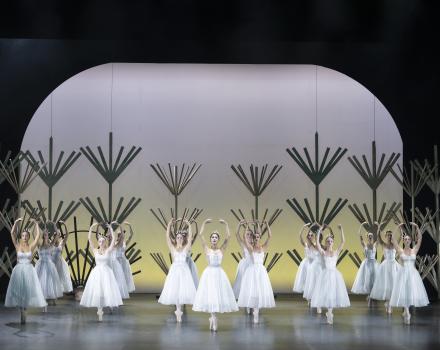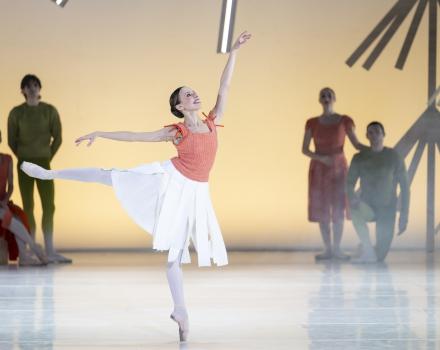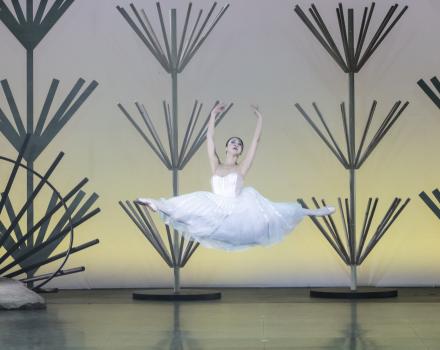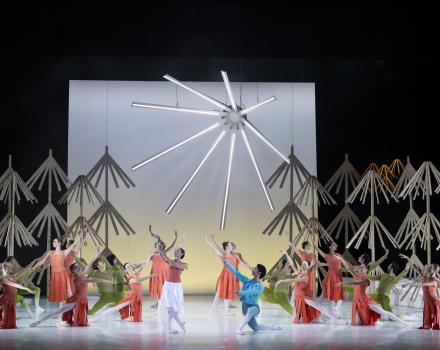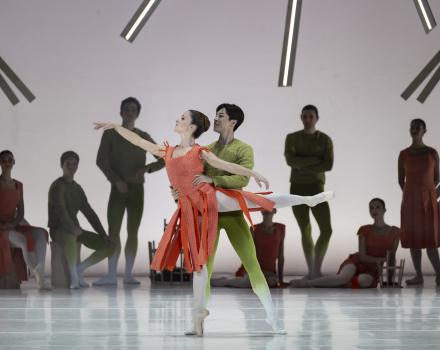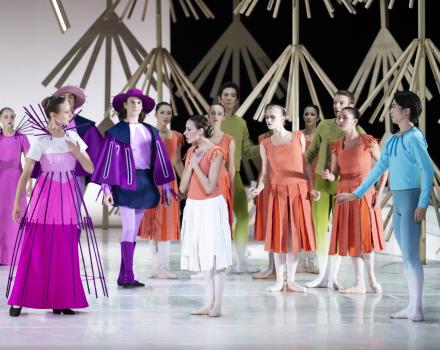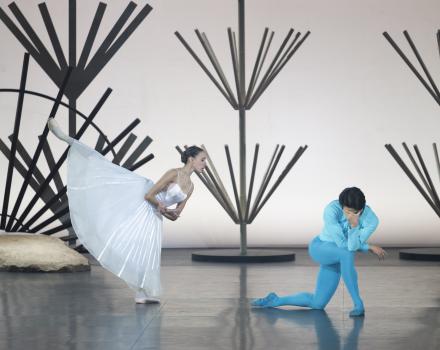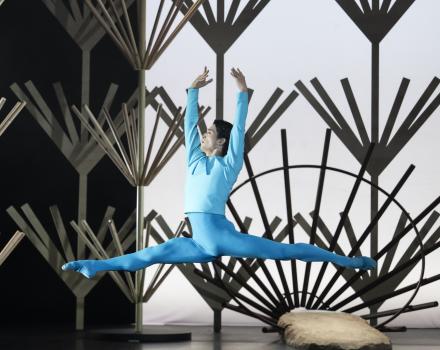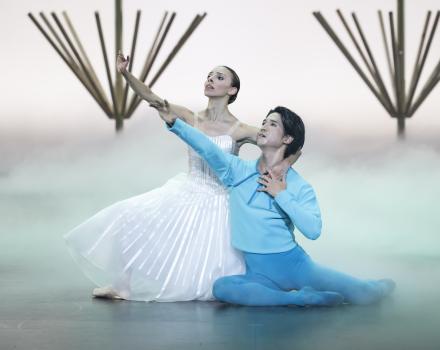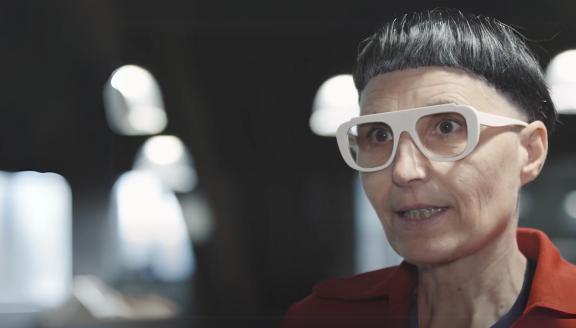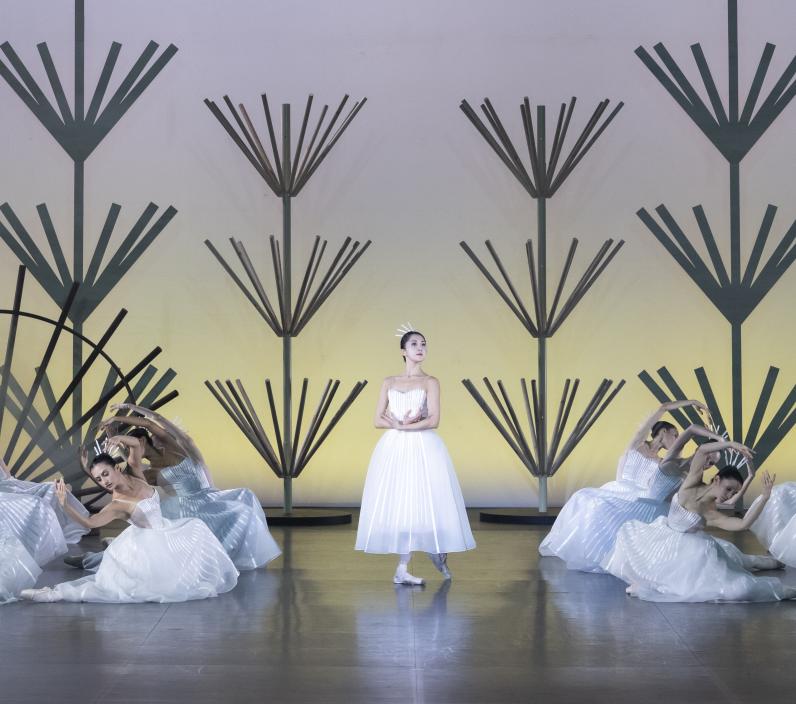
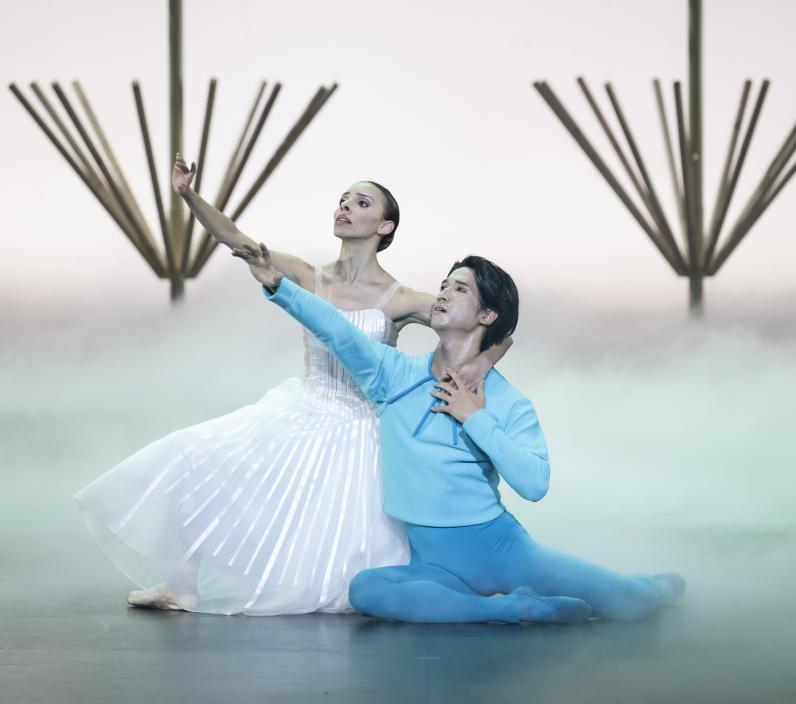
Giselle

Giselle is an ethereal, timeless ballet about eternal love. In this ghost-filled tragedy, a beautiful young peasant girl falls for a disguised nobleman named Albrecht. When his identity is revealed by his rival, Hilarion a gamekeeper, Giselle loses her mind and dies of heartbreak. After her premature death, Giselle’s ghost protects her lover from the vengeance of a group of female spirits called Wilis.
The libretto for Giselle was devised by Théophile Gautier, who combined one of his fairy tales, La Cafetière (1831), with the Germanic legend of the Wilis - fiancées who died on the eve of their wedding day - described in a poem by Heinrich Heine. The choreography was created by Jean Coralli, director of the Paris Opera, and Jules Perrot, dancer and partner of Carlotta Grisi, the first Giselle. The famous romantic ballet Giselle has yet to reveal all its secrets. And when it is set by matali crasset, one of the leading figures in contemporary design in France, the dance creates a kind of ethereal leap between tradition and modernity. In this new production streamed live from Opéra national de Bordeaux, the dancers' gestures have not changed, nor have the romantic tutus. This eternal story simply continues in a new setting.
Cast
Giselle | Marini Da Silva Vianna |
|---|---|
Albrecht | Riku Ota |
Myrtha | Ahyun Shin |
The Mother | Pascaline Di Fazio |
Hilarion | Riccardo Zuddas |
Wilfried | Guillaume Debut |
Bathilde | Anaëlle Mariat |
Duke of Courland | Marc-Emmanuel Zanoli |
Grape-Pickers | Marina Guizien Ryota Hasegawa |
Two Willis | Hélène Bernadou Anna Gueho |
Ballet | Ballet de l'opéra National de Bordeaux |
Orchestra | Orchestre National Bordeaux Aquitaine |
| ... | |
Music | Adolphe Adam |
|---|---|
Choreography | Eric Quilleré after Jules Perrot & Jean Coralli |
Design, Scenography, Sets, Costumes, Accessories | matali crasset |
Lights | Yannick Fouassier |
Conductor | Sora Elisabeth Lee |
| ... | |
Video
Story
Act I
Albrecht, Prince of Silesia, disguises himself as a villager to court peasant women, among them Giselle, with whom Hilarion, the gamekeeper, is in love. When Hilarion discovers the Prince's identity, he denounces him, while Giselle is confronted by Albrecht's fiancée, Bathilde a noble. Giselle, betrayed, loses her mind and dies.
Act II
In the forest at night, the Wilis, ghosts of young girls who died of love before their wedding day, mercilessly hunt down any male presence. Their queen, Myrtha, takes in Giselle and initiates her into the ritual of death. Their first victim is none other than Hilarion, then it's Albrecht's turn, whom Giselle manages to save by the strength of her love.
Insights
‘Giselle or in defence of a living culture’
by matali crasset, french designer responsible for the design, scenography, sets, costumes, accessories of Giselle.
Intention
My role is to imagine a more contemporary reading of the story of Giselle by bringing two worlds face-to-face in the narrative. On the one hand, the world of the farm where Giselle lives, which I reinterpret as a ‘world below’. It is close to living things and defends them. On the other, there is the ‘world above’, the world of people who fear losing their privileges, a more universal interpretation that relates to our contemporary world and its challenges. I like to think that Albrecht is certainly a defector, moving from the world above to the world below, because he loves Giselle, but also because he wants to get closer to the culture of the living. That's why, in the end, he is saved. The world below is a foreshadowing of the world to come.
The two acts are very contrasting. Act 1 is about reality, about life: the costumes are very colourful and the life of the community is exalted. Act 2 is the act of fantasy, giving way to evanescence brought mainly by the ghostly presence of the young women: the Willis.
Set
My creative starting point was to imagine that the real main character of the ballet is the ‘tutu’. So all the structures created for the set are cone-shaped, with a rhythm of lines running around the perimeter. The set, which remains fixed, thus resonates with the tutu. Its dynamics and suppleness are further enhanced.
The ballet is set in a romantic landscape, with a forest and a thatched cottage where Giselle lives in the world below, and a castle in the distance representing the world above. My intention was to consider that the word landscape designates a reality: it is not just a view, a panorama or a simple piece of nature, but a system of space developed by man on the surface of the Earth to meet the needs of a community. In fact, the interplay between human activities and natural realities is what makes up a landscape.
Becoming more aware of the environment involves our relationship with the land and its use, and a reaffirmation of a communal landscape. That's why the set, and in particular the trees that make it up, were handcrafted by the Opera's carpenters. Not as a representation, but as a wooden construction. The same goes for the sun, which has the same materiality. To show real, unpainted material is to show real know-how, with a concern for its reuse when the ballet is finished. Similarly, the elements of the landscape in Act 1 are reused in a completely different way in Act 2.
Costumes
Two types of costume mark the difference between being from the ‘world above’ and being from the ‘world below’. The material of the costumes itself is very important: ‘downstairs’, I worked with raw materials considered to be of little value, which I wanted to enhance to make them unique thanks to the know-how of the Opera's workshops. I wanted to take an everyday raw material and offer a different kind of sophistication.
These costumes are made from embossed fabric manufactured by a French company, which is usually used to make floor cloths. The weave is 80% cotton and 20% recycled waste. The fabric is produced specifically for this show, dyed and made in the Opéra's workshops. The world below showcases the expertise of textile manufacturers in France. It's a rich resource that needs support. From the manufacture of the material in the Lyon textile basin to the production in the workshops of the Opéra, it is an alliance between two factories on a human scale, between two areas of expertise. For the costumes of the people from the world above, I imagined a more synthetic material with slightly artificial colours, as if to signify a world of appearance.
During the process of directing, I was invited to settle down in a 'house' that functions like a living organism, where everyone has their own role and expertise. I was able to talk to Eric Quilleré about his approach to choreography, to Jean-Philippe Blanc about costumes, and to see the project come to life with Yannick Fouassier's set and lighting design. I liked giving impetus to an overall logic, then leaving everyone free to take over and add their own expertise. This quasi-organic organisation around this singular project was based on mutual trust, which I'm sure will shine through the performances.
Gallery
